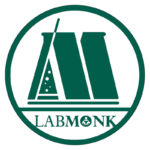[ps2id id=’background’ target=”/]
BACKGROUND
Spread plate method is a process of isolation and enumeration of bacteria and other microorganisms from a mixed culture. It helps in measuring the quantity of bacteria present in the solution or the number of viable bacteria present in a solution. The objective of this experiment is to determine the countable number of isolated bacterial colonies.1
[ps2id id=’requirements’ target=”/]
REQUIREMENTS
Materials: Bacterial sample
Sterilized distilled water
Nutrient agar plate
Alcohol
Equipments: Pipette
Bunsen burner
L-shaped rod
Incubator
Microscope
[ps2id id=’procedure’ target=”/]
PROCEDURE
At first make a series of dilution of the sample containing the bacteria. From the desired dilution series take out 0.1ml of solution with the help of a pipette and put it in the centre of the nutrient agar plate. Now tale a L-shaped glass rod and dip it in the alcohol and flame it over the Bunsen burner. Then little cool down the glass rod and then evenly spread the solution over the agar plate. Then cover the plate and keep it in the incubator at 37oC for 24 hours. After 24 hours observe the growth and count the colony for unit value of the sample. After counting the solution multiply it with the specified dilution factor for knowing the number of CFU/ml in the actual sample.
[ps2id id=’conclusion’ target=”/]
CONCLUSION
Spread plate method of counting the viable colony is used in most of the improvement, selection and screening experiments. But sometimes crowding of the colonies makes the determination difficult.
[ps2id id=’references’ target=”/][ps2id id=’1′ target=”/]
REFERENCES
-
Albus WR. Research laboratories, Bureau of Diary Industry, United states Department of Agriculture, 1928.


